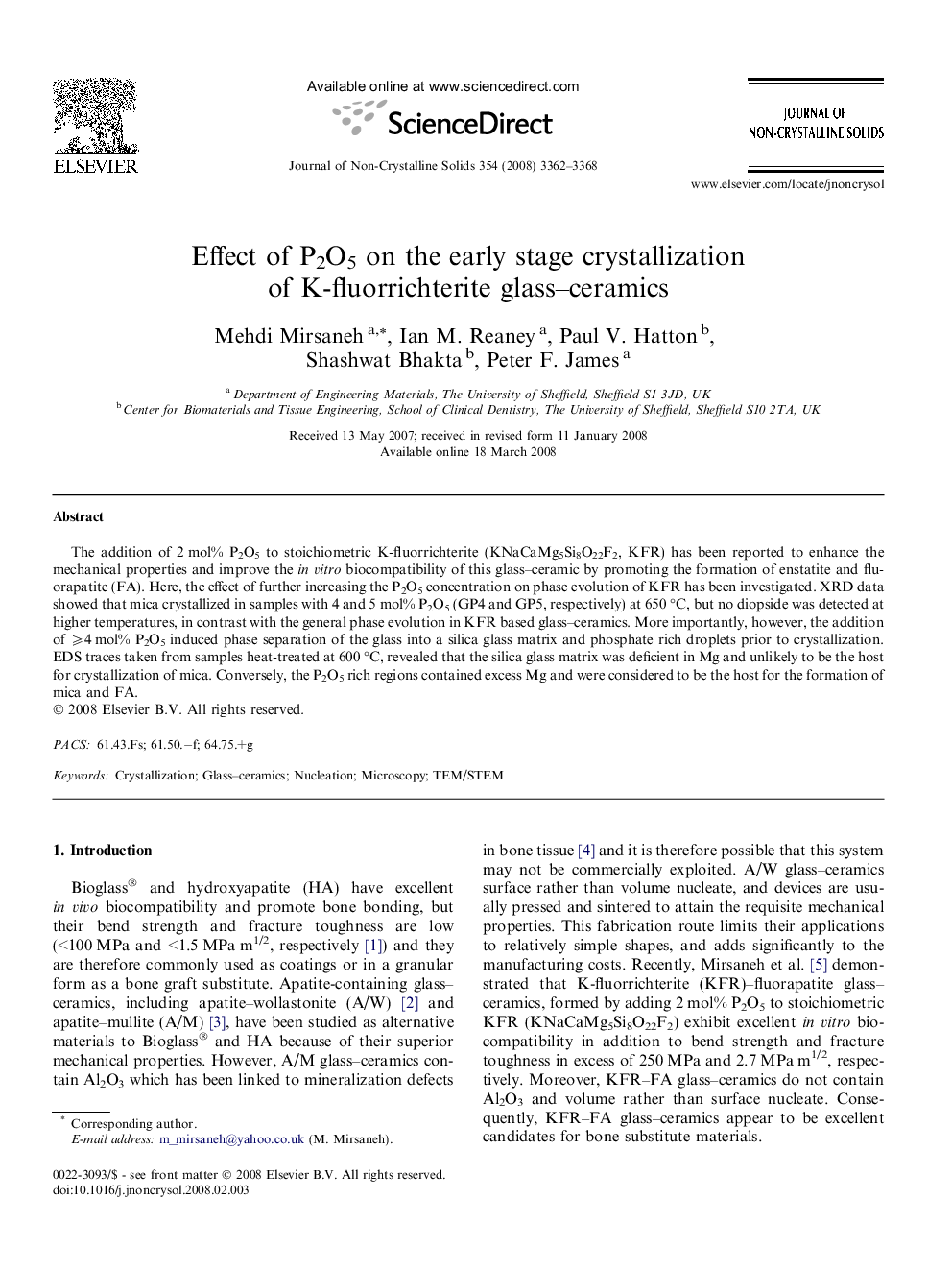| Article ID | Journal | Published Year | Pages | File Type |
|---|---|---|---|---|
| 1484315 | Journal of Non-Crystalline Solids | 2008 | 7 Pages |
The addition of 2 mol% P2O5 to stoichiometric K-fluorrichterite (KNaCaMg5Si8O22F2, KFR) has been reported to enhance the mechanical properties and improve the in vitro biocompatibility of this glass–ceramic by promoting the formation of enstatite and fluorapatite (FA). Here, the effect of further increasing the P2O5 concentration on phase evolution of KFR has been investigated. XRD data showed that mica crystallized in samples with 4 and 5 mol% P2O5 (GP4 and GP5, respectively) at 650 °C, but no diopside was detected at higher temperatures, in contrast with the general phase evolution in KFR based glass–ceramics. More importantly, however, the addition of ⩾4 mol% P2O5 induced phase separation of the glass into a silica glass matrix and phosphate rich droplets prior to crystallization. EDS traces taken from samples heat-treated at 600 °C, revealed that the silica glass matrix was deficient in Mg and unlikely to be the host for crystallization of mica. Conversely, the P2O5 rich regions contained excess Mg and were considered to be the host for the formation of mica and FA.
